List of Painting Schools (Characteristics & Images)
X
Advertisements
Loading...
Painting is one of the historical works that has existed since ancient times, where for the flow of painting is very varied.
now, this time we will discuss in more detail related to its various streams.
But before that, you must know the meaning of painting and the meaning of the flow of painting itself.
Art painting is a branch of fine art that is realized through various two-dimensional works and using canvas as well as media another flat surface filled with various basic elements of line and color through dyes or paints and image enhancers other.
The resulting painting can be a representation of nature such as animals, portraits, or landscapes.
You can also add abstract images which are a form of simplification of nature / contain expressive expressions from artists.
Temporary painting flow is a style of genre / distinctive understanding that is followed by certain individuals or groups in making a work of painting.
The flow in question can be in the form of the main idea created by someone / flows naturally (appears in the development of painting).
And here are some kinds of painting styles that you need to know, including:
list of contents
1. Classicism
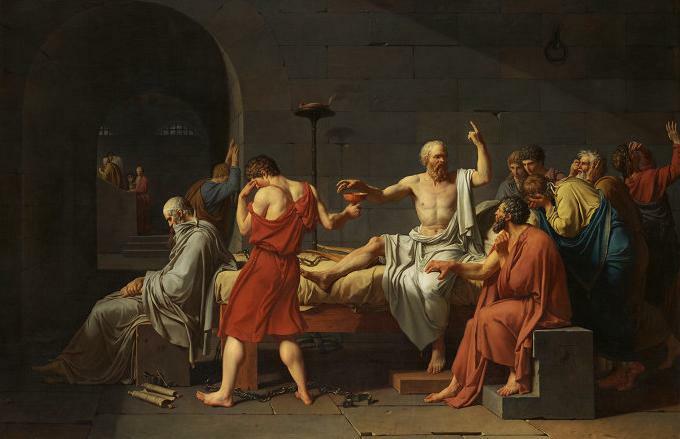
Advertisement
The flow of classicalism is a flow that shows an image classically and also has its own character and character.
In this one stream, many are displayed in the archipelago and also abroad.
In this flow will generally refer to the Greeks and Romans.
Characteristics:
- Painting is bound by various academic intellectual norms.
- The created form is always balanced and harmonious.
- Various color boundaries have a clean as well as static nature.
- The face is calm and has a great impression.
- Contains stories related to the palace environment.
- Tends to be exaggerated.
The characters:
- Bartholomé Vignon (1762 – 1846)
- Jacques Lovis David (1974 – 1825)
- Jan Ingles (1780 – 1867).
2. Italian Renaissance Art
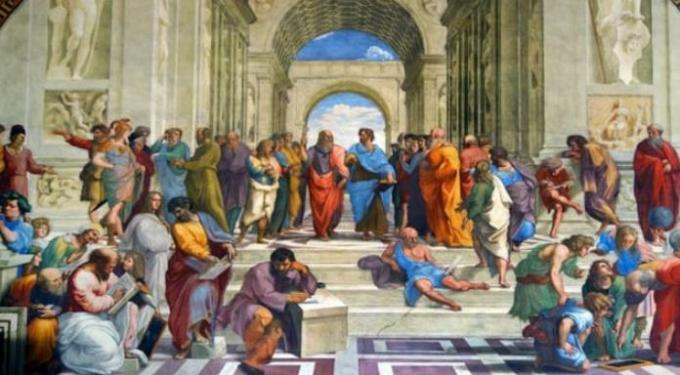
From the 14th to the 17th centuries, the country of Italy experienced an age of enlightenment like never before.
This is known as the Renaissance, a term taken from the Italian Rinascimento which means “rebirth”.
In this one set describes the increased attention in a cultural subject such as art and architecture.
Italian Renaissance artists Leonardo da Vinci, Michelangelo, and Raphael also found inspiration in in the classical arts of Ancient Rome and Greece and adopted ancient interests such as naturalism, balance, and perspective.
In Italy during the Renaissance, this ancient-inspired approach was created as humanist portrait paintings, anatomically correct sculptures, and symmetrical architecture that harmonious.
3. Constructivism

Constructivism is one of the schools of painting that emphasizes more on the depiction of the artistic side of a building.
Characteristics:
- Objects can be ancient, modern, classic, or any building.
- In the main object that is painted is a building and the background around the building from a painting angle.
The characters:
- Jim Nyoman Nuarta
- Sprinka
- Laszlo Moholy-nagy
- Supankat
- Liubov Popova
- Victor Pasmore
- Naum Gabo.
4. Realism

Realism is one of the schools that began in France after the French Revolution of 1848.
In this case, the realist painter has a focus on the landscape of contemporary people as well as everyday life.
What looks normal now is a revolutionary painter after centuries later describe an exotic scene from mythology and the Bible or draw portraits of royalty and priests.
French artists such as Honoré Daumier and Gustave Courbet as well as international artists such as James Abbott McNeill Whistler have a focus on all social classes in their art.
And they also gave voice to poorer members of society for the first time and described social problems stemming from the Industrial Revolution.
Photography also influences this type of art which encourages painters to produce realistic representations in today's technological competition.
5. Contemporary/ Posmo/ Post Modern

Contemporary is a flow of painting that is not bound by the standard and develops according to its era.
Characteristics:
- The objects depicted are dynamic, free, expressive and striking objects.
- The depiction of an object in the form of a reflection of the situation and time is very thematic.
The characters:
- Ida Applebroog
- Frank Auerbach
- Richard Artschwager.
6. Post-Impressionism
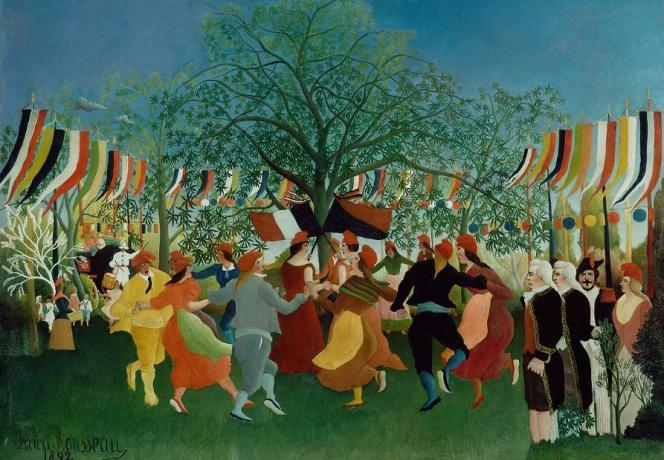
This school developed between 1886 and 1905 in response to the Impressionist movement.
Advertisement
At this time, artists reacted to the need for naturalistic depictions of light and color in Impressionist art.
Unlike previous styles, Post-Impressionism encompasses a wide variety of art, from Georges Seurat's Pointillism to Paul Gauguin's Symbolism.
Not united with one style, artists are also united by the inclusion of abstract elements and symbolic content in their artworks.
Vincent van Gogh's Post-Impressionist is best known for using color strokes to convey his own emotions and state of mind.
7. Dadaism

Dadaism is a genre that presents artistic works from forms that are magical, scary, terrible, childish (naive), and sometimes impressive.
Characteristics:
- Art that does not want illusion or can be said to be without illusion.
- Has a dominance of black, white and green with primary coloring, sharp and contrasting.
The characters:
- Roull Haussmann
- Duchamp
- Hans Arp.
8. Surrealism

A precise definition of Surrealism may be difficult to understand, but it is clear that the avant-garde movement it endures and remains one of the most approachable art genres, even today this.
Imaginative images of subconscious impulses became the main characteristic of this school which began in the 1920s.
This movement began when a group of visual artists adopted automatism by relying on the subconscious for creativity.
Using a call for artists to break free from limitations and take total creative freedom, Surrealists often challenge perception and reality in their art.
Part of it stems from the juxtaposition of realistic painting styles with unconventional and unrealistic subject matter.
9. Pittura Metaphysica
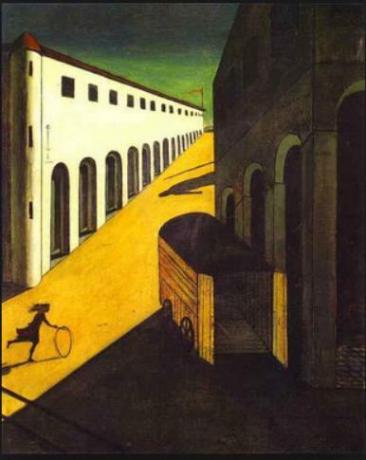
Pittura metaphysica is a flow of painting that can give a picture of an object with a touch of metaphysics.
This flow is also an opponent of cubism and also futuristic.
Characteristics:
- Objects are generally in the form of humans who are working on activities with objects and the background behind them.
- In this genre, the objects that are painted are generally in the form of dolls that are closely related to metaphysical things.
The characters:
- Giorgio de Chirico
- Carlo Carra.
10. Pop Art

Pop Art is one of the important movements that marked the beginning of contemporary art.
This post-war style emerged in Britain and America, including imagery from comic books, advertisements, and everyday objects.
Often satirical, Pop Art also emphasizes the superficial elements of the common good. And also often considered to be a reaction to the subconscious elements of Abstract Expressionism.
Roy Lichtenstein's work is an excellent example of how parody and pop culture are combined with fine art to create accessible art.
Andy Warhol is also a very famous Pop Art figure. Where he helped push revolutionary concept art into mass production and created many silkscreen series of his popular works.
11. Romanticism

The flow of Romanticism is a school that seeks to display a painting in a fantastic and beautiful way.
In this one stream, it also refers to something romantic in nature, such as a natural landscape, tragedy, or history.
Characteristics:
- The painting contains a powerful and emotional story.
- Colors are contrasting and lively.
- Full of motion and very dynamic.
- Dynamic composition settings.
- The awesomeness beyond reality
- Contains bitterness and touching feelings.
The characters:
- Raden Saleh
- Eugene Delacroix
- Theodore Gericault
- Jean Baptiste.
12. Abstract Expressionism

Abstract Expressionism is an American art movement that first exploded on an international scale (after World War II).
This has confirmed New York to be the new center of the art world, which is traditionally based in Paris.
This genre has flourished in the 1940s and 1950s, although the term has also been used to describe the work of earlier artists such as Wassily Kandinsky.
This art style also takes on the spontaneity of surrealism and provides a dark atmosphere of post-war trauma.
Jackson Pollock is the leader of this movement.
The term "Abstract Expressionism" although closely related to Pollock's work, is not limited to one particular style.
Works as varied as Willem de Kooning's figurative paintings and Mark Rothko's color fields are categorized as Abstract Expressionism.
13. Naturalism

Advertisement
The flow of Naturalism is one of the schools that seeks to display an object of painting naturally.
In this one flow, it resembles the flow of realism. But what distinguishes it is naturalism has an addition to make it more beautiful.
Characteristics:
- Most have a nature-related theme.
- Has the technique of color gradation.
- It has an arrangement of comparisons such as texture, perspective, color and light that is done very carefully.
The characters:
- Raden Saleh
- Abdullah Sudrio Subroto
- Basuki Abdullah
- Gambir Anom
- Trubus.
14. Futurism
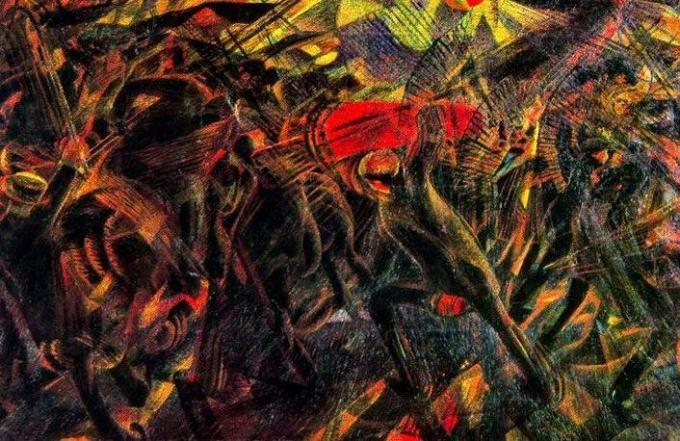
The flow of Futurism is a flow in which painting objects appear to be moving.
An object will be described several times in the same way and in perspective.
Characteristics:
- A work of art that captures the elements of motion as well as speed.
- Using typography is an element of expression in a design.
- Using the principle of multiple views (multiple viewpoints).
- Shows about discipline, dynamism, and style to express speed and also timing.
The characters:
- Giacomo Balla
- Umberto Boccioni
- Sculptor
- Carlo Carr,
15. Baroque

The Baroque movement emerged in Italy at the end of the Renaissance.
This Baroque art exhibits an artistic interest in realism and rich colors. In contrast to other styles of painting, this Baroque work also emphasizes luxury.
This luxury is evident in sculpture, painting, and Baroque architecture.
Painters such as Caravaggio also depicted drama through their treatment of light and their depiction of motion.
Sculptors like Bernini also achieve a theatrical feel through dynamic contours and intricate curtains.
Architects across Europe also adorn their designs with ornaments ranging from intricate carvings to impressive columns.
16. Fauvism

The flow of Fauvism is a flow that gives freedom of expression so that many objects of painting are created in contrast to the original.
Characteristics:
- The various colors used are clearly no longer adapted to the colors of the original.
- The resulting paintings are wild and contrasting colors.
- The use of lines in Fauvism is simplified so that the observer of the painting can detect the presence of clear and strong lines.
The characters:
- Henry Matisse
- Andre Dirrain
- Maurice de Vlamink
- Rauol Dufi
- Kess Van Dongen.
17. Pointillism

Pointillism is one of the schools of painting that depicts an object by using dots.
Characteristics:
- The object being painted will be clearly visible from a distance, and a little blurry when enjoyed up close.
- The points used consist of various variations, whether large - small, thick - thin, or using black and white.
The characters:
- Rijaman
- Seurat's La Parade
- Keo Budi Harijanto.
- Vincent van Gogh.
18. Impressionism
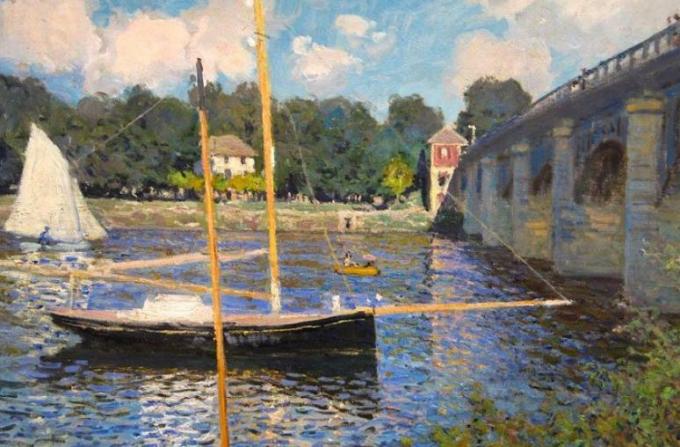
Maybe this one thing is hard to believe, but the flow of painting that is currently loved is a wasted visual movement.
Advertisement
These Impressionist painters usually used brush strokes with bright colors with minimal blending and open composition in capturing the emotions of light and movement.
Impressionism began when a group of French artists broke with the academic tradition by painting en plein air.
This decision surprised most landscape painters to execute their work in a studio.
The original group, which included Pierre-Auguste Renoir, Claude Monet, Alfred Sisley, and Frédéric Bazille, was formed in the early 1860s in France.
Additional artists also join in forming their own societies to showcase their art after being rejected by traditional French groups who had the assumption that it was too controversial to exhibited.
This first underground exhibition took place in 1874 which allowed them to gain support from the public.
19. optics

Optics is one of the schools of painting that is able to describe an object in a visual manipulation that can deceive the eye.
Characteristics:
- Images are in the form of simple shapes and do not have complicated details.
- Objects that are painted are only in the form of lines, fields, or objects that are black and white.
The characters:
- Bridget Louise Riley
- Agus Djaja
- Walter Gropius.
20. Primitive

Primitive is one of the schools of painting that can show an object seen from the primitive depiction style on the cave wall.
Characteristics:
- The details of the object are not highlighted, only in the minimalist depiction in the form of simple lines and accents.
- Objects are painted in the form of plants, animals and humans in the form of simple lines.
The characters:
- S. Sudjojono
- Ricardo Ponce.
21. Cubism
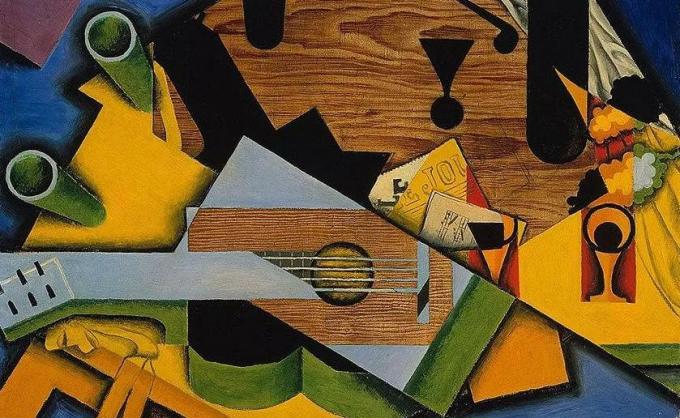
Cubism was one of the most important art movements of the 20th century.
Pablo Picasso and Georges Braque introduced Cubism in the early 1900s, with the term coined by art critic Louis Vauxcelles in 1907.
During the 1910s – 1920s, the two men then teamed up with other artists to use geometric shapes to construct the final representation.
The reduction of images into minimal lines and shapes was one part of the Cubist quest with the aim of simplification.
The minimalist look also drips into the color palette. Where in Cubism ignores shadows and uses limited hues in an even look.
This is one of the clearest differences from the use of perspective that has been the standard since the Renaissance.
Cubism also opened the door for subsequent art movements such as Surrealism and Abstract Expressionism by discarding the artist rule book that had been determined.
22. Gothic

Gothic is one of the styles of painting that can provide an image of an object with thick lines and slim shapes and also to emphasize something based on color.
Characteristics:
- Paintings like this will generally be found in kingdoms, houses of worship and castles.
- Objects painted in general are knights, holy figures, kings and queens.
The characters:
- Albert Durer
- Mathias Grunnewald
- Jan Van Eyck
- Pieter Droughel.
